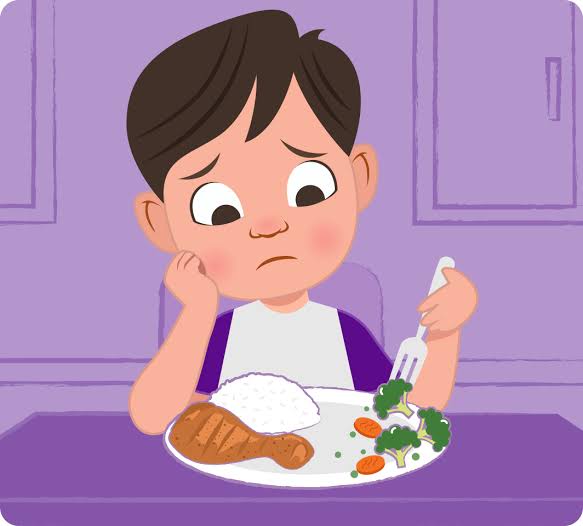
Understanding Food Phobias: Exploring the Causes and Coping Strategies
Food is an integral part of our lives, providing nourishment, pleasure, and a sense of community. However, for some individuals, food can evoke not joy, but fear and anxiety. Food phobias, often referred to as selective eating disorders or avoidant/restrictive food intake disorder (ARFID), are conditions where individuals have an intense aversion to certain foods, textures, or specific aspects of the eating experience. In this article, we will explore the complex world of food phobias, examining their causes, symptoms, and coping strategies for those affected.
Understanding Food Phobias
A food phobia is characterized by an intense and irrational fear or aversion to specific foods or eating situations. While most people may have foods they dislike or prefer to avoid, individuals with food phobias experience a level of distress and anxiety that significantly impacts their daily lives.
Causes of Food Phobias
Food phobias can develop for various reasons, and they often have both psychological and sensory components. Some of the primary causes include:
- Sensory Sensitivities: Many individuals with food phobias have heightened sensory sensitivities. This means that they may find certain textures, tastes, or smells overwhelming or intolerable. These sensory aversions can lead to strong reactions, such as gagging or even vomiting when exposed to the feared food.
- Traumatic Experiences: Some food phobias can be traced back to traumatic experiences involving food. These experiences may include choking, a severe allergic reaction, or an incident where the individual witnessed others getting sick after consuming a particular food.
- Early Childhood Influences: The development of food phobias can often be linked to childhood influences. Parents or caregivers may unintentionally contribute to the development of these phobias through their own food aversions or by using food as a form of control or punishment.
- Neophobia: Neophobia, the fear of new foods, is a common component of food phobias. Some individuals may have a natural aversion to trying new foods, leading them to stick to a limited and familiar diet.
Symptoms of Food Phobias
Identifying food phobias can be challenging, as they manifest differently in each individual. However, common symptoms and behaviors associated with food phobias may include:
- Limited Food Choices: Individuals with food phobias tend to have a very restricted diet, often avoiding entire food groups or categories.
- Anxiety and Discomfort: The thought of consuming the feared food or being in situations where that food is present can lead to high levels of anxiety and discomfort.
- Avoidance Tactics: Individuals may go to great lengths to avoid situations involving the feared food. This can lead to social isolation or difficulties when dining out.
- Physical Reactions: The sight, smell, or even mention of the feared food can trigger physical reactions, such as nausea, sweating, or even panic attacks.
- Limited Nutritional Intake: Because of their restricted diets, individuals with food phobias are at risk of nutrient deficiencies and related health issues.
Coping Strategies for Food Phobias

Managing food phobias can be challenging, but there are strategies and therapies that can help individuals overcome their aversions and improve their relationship with food. Some of these coping strategies include:
- Cognitive-Behavioral Therapy (CBT): CBT is a commonly used therapeutic approach for addressing food phobias. It helps individuals identify and challenge irrational beliefs and fears related to food. A therapist can work with the individual to gradually introduce and desensitize them to the feared foods or textures.
- Exposure Therapy: Exposure therapy involves controlled and gradual exposure to the feared food or eating situations. The process helps individuals become desensitized to the anxiety-triggering elements.
- Nutritional Counseling: Working with a registered dietitian or nutritionist can help individuals develop a balanced and nutritious diet that accommodates their food aversions. This can help mitigate the health risks associated with a limited diet.
- Support Groups: Joining support groups or therapy groups with others who share similar food phobias can provide a sense of community and understanding. Sharing experiences and strategies can be therapeutic.
- Gradual Exposure at Home: Individuals can practice gradual exposure to their feared foods in the comfort of their own homes. This may involve incorporating small amounts of the feared food into familiar dishes or recipes.
- Mindfulness and Relaxation Techniques: Learning mindfulness and relaxation techniques can help individuals manage anxiety and stress related to their food phobias. These techniques can be valuable in reducing the physical and emotional reactions associated with aversions.
- Medication: In some cases, healthcare professionals may prescribe medication, such as anti-anxiety medications, to help manage the anxiety associated with food phobias. Medication is typically used in conjunction with therapy and other interventions.
The Importance of Seeking Help
Food phobias can have a profound impact on an individual’s quality of life, nutrition, and mental health. Seeking professional help is crucial for those dealing with food phobias, as these conditions can be complex and challenging to overcome independently.
Support from a therapist, registered dietitian, or support group can make a significant difference in helping individuals expand their diets, alleviate anxiety, and improve their overall well-being.
Navigating Food Phobias: A Personal Journey to Overcome Fear
Understanding food phobias isn’t solely an academic exercise; it’s an exploration of deeply personal struggles and the quest for healing. In this section, we will delve into the real-life experiences of individuals who have faced and triumphed over their food phobias, shedding light on their journeys, challenges, and victories.
The Labyrinth of Fear: A Personal Perspective
“I’d never met anyone who was afraid of bananas before,” Sarah recalls with a wry smile. Her food phobia journey began during childhood, when she had a traumatic experience involving a banana that led to a profound aversion to not just the fruit but anything remotely resembling it in texture or appearance.
For Sarah, the fear was real and unrelenting. The mere presence of a banana in the room could trigger panic attacks, and the thought of consuming it seemed unimaginable. Her family’s well-meaning attempts to encourage her to “just try it” often resulted in frustration and tears.
“I wasn’t just afraid of bananas; I was afraid of being judged, of being ‘different,'” Sarah says. “But I knew I needed help.”
Finding Support and Understanding

One of the first steps Sarah took was to connect with a therapist who specialized in food phobias. Therapy provided her with the space to explore the origins of her fear, the associated emotions, and the cognitive distortions that had taken root over the years.
“It was a relief to be heard, to have someone validate my feelings without judgment,” Sarah notes. “I realized that food phobias were about more than just the food; they were about the emotions and experiences attached to it.”
Exposure Therapy: Facing the Fear Head-On
Sarah’s therapist introduced her to the concept of exposure therapy, a technique that involved gradually exposing her to bananas in a controlled and supportive environment. The process started with visual exposure, looking at pictures of bananas, then progressed to the presence of bananas in the room without the pressure to consume them.
“It was hard, really hard,” Sarah admits. “But over time, I began to desensitize myself to the fear. I realized that the banana wasn’t the monster I’d made it out to be. It was just a fruit.”
Coping with Anxiety: The Power of Mindfulness
One of the tools Sarah found invaluable in her journey was mindfulness and relaxation techniques. These practices helped her manage the intense anxiety that arose during exposure therapy and in other situations related to her food phobia.
“Mindfulness allowed me to observe my thoughts and feelings without judgment,” Sarah explains. “It helped me acknowledge my anxiety and gently guide myself back to a place of calm and self-compassion.”
Community and Compassion: The Healing Process
As Sarah’s journey unfolded, she connected with a support group of individuals who shared her experiences. The sense of community and understanding was empowering. Together, they exchanged stories, strategies, and, most importantly, compassion.
“Support groups provided a safe space where we could share our fears, triumphs, and even our setbacks,” Sarah says. “It was a reminder that we weren’t alone in this journey, and that recovery was possible.”
The Victory of a Fear Conquered
Today, Sarah is in a profoundly different place. She can sit at a table with a banana without feeling a rush of panic. In fact, she can even enjoy other fruits and foods that once felt impossible to conquer.
“Recovery isn’t linear,” Sarah emphasizes. “There are moments of doubt and relapse, but those are part of the process. The most important thing is to keep moving forward, even if it’s one small step at a time.”
Conclusion: A Message of Hope
Sarah’s journey to overcome her food phobia is a testament to the resilience of the human spirit. It’s a reminder that with the right support, understanding, and a commitment to healing, individuals with food phobias can find a path to recovery.
Food phobias are not a life sentence. They are a challenge to be faced, understood, and, ultimately, overcome. With the right guidance and a network of support, individuals can find their way out of the labyrinth of fear and into a place of healing, where food is no longer the source of anxiety but a source of nourishment and enjoyment.
Compassion and Understanding
Food phobias are not simply a matter of picky eating or personal preference. They are complex conditions that can be deeply distressing for those affected. Recognizing the psychological and sensory components of food phobias, as well as the potential underlying causes, is essential in offering support and understanding to those navigating this challenging aspect of their lives. With the right strategies and therapeutic interventions, individuals with food phobias can gradually expand their food choices and regain a healthier relationship with the nourishing and enjoyable aspects of food.